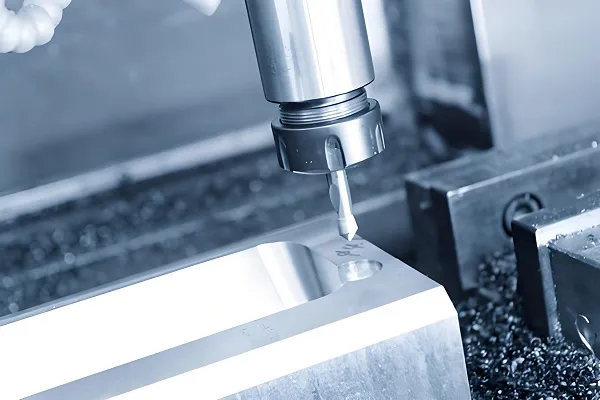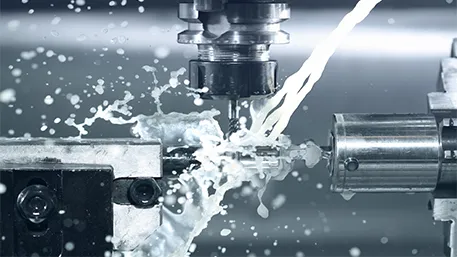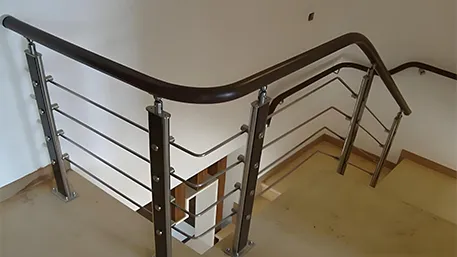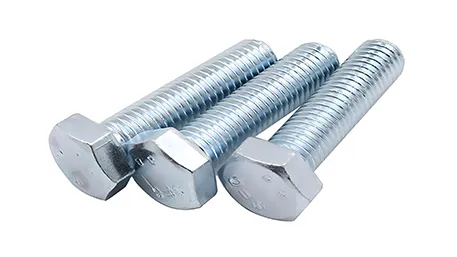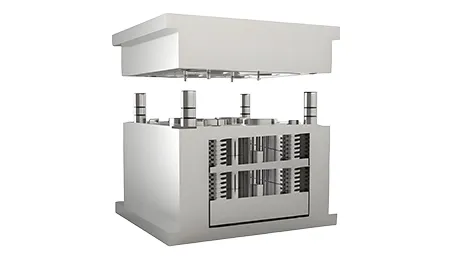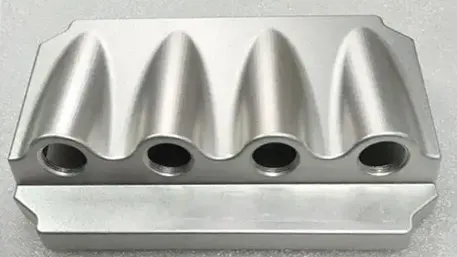As an important tool in modern manufacturing, metal stamping dies play a vital role in the field of metal processing. They are widely used in many industries such as automotive, electronics, home appliances, aerospace, etc. They transform metal sheets or other malleable materials into parts of various shapes and sizes through precise design and manufacturing. This article will be from the basic concept of metal stamping die, working principle, classification, application areas and future development trends and other aspects of the detailed popularization.
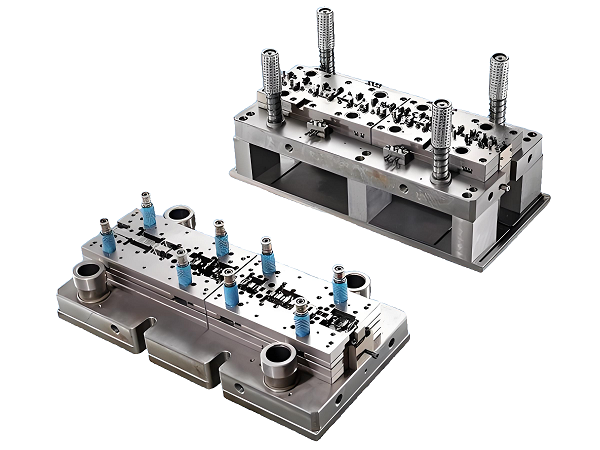
1.The basic concept of metal stamping die
Metal stamping die is a special tool used in the press or stamping machine on the metal plate stamping processing, in order to form the required shape and size of the parts. It combines mold design, material science and manufacturing process. Through the specific shape of the mold and the interplay of the working surfaces, pressure is exerted on the material to make it plastically deform or separate, so as to obtain the required product or part.
2.The working principle of metal stamping die
The working principle of metal stamping mold mainly includes the following steps:
2.1 Installation and debugging: According to the shape and size requirements of the parts, choose a suitable mold and install it on the press. Subsequently, debugging of the mold is carried out to ensure that the parts are accurately coordinated and can carry out the stamping operation smoothly.
2.2 Stamping Processing: Start the stamping press, so that the punch of the mold exerts pressure on the metal plate. Under the action of pressure, the metal plate undergoes plastic deformation, forming the required parts according to the shape and size requirements of the mold.
2.3 Unloading and post-processing: after the stamping is completed, the parts are removed from the mold and subjected to the necessary post-processing, such as deburring, cleaning, surface treatment, etc., in order to improve the quality and appearance of the parts.
3.Classification of metal stamping mold
Metal stamping die according to its structure, use and processing mode, can be divided into a variety of types, including:
3.1 Single-process mold: can only complete a stamping process mold, such as punching mold, drop mold, etc..
3.2 Composite mold: can be in a stamping process to complete a number of processes in the mold, such as punching – drop compound die.
3.3 Progressive mold: also known as continuous mold, can be in a material belt to complete a number of stamping processes, the formation of multiple parts, suitable for mass production.
3.4 Cold stamping die: stamping process in the room temperature of the mold, suitable for sheet metal and other plastic materials processing.
3.5 Hot stamping die: the die for stamping processing under high temperature environment, suitable for processing some special materials that need high temperature to deform.
4. Application fields of metal stamping molds
The application fields of metal stamping die are extremely wide, covering almost all the industries that need metal parts, mainly including:
4.1 Automotive industry: automobile body, hood, door, seat skeleton and a large number of parts need to be produced through stamping molds.
4.2 Electronic industry: smart phones, tablet PCs, laptops and other electronic products in all kinds of brackets, shells, connectors, etc. are also widely used stamping technology preparation.
4.3 home appliance industry: refrigerators, washing machines, air conditioners and other home appliances, such as the shell, internal components and other parts are also often used stamping molds for production.
4.4 Aerospace: aircraft, rockets and other aerospace vehicles, structural components, parts and other high-precision, high-strength stamping mold for processing.
5. The future development trend of metal stamping molds
With the continuous development of the manufacturing industry and the continuous progress of technology, the metal stamping mold industry also presents some new development trends:
5.1 High precision: With the increasing demand for product quality and precision, improving the precision and stability of stamping dies will become an important direction for future development.
5.2 Automation and Intelligent: With the continuous integration and application of new generation of information technology such as artificial intelligence, Internet of Things, big data, etc., the stamping die industry will gradually realize automation, digitization and intelligence, and improve production efficiency and quality.
5.3 Green environmental protection: with the increasingly serious global environmental problems and environmental protection awareness, the stamping die industry will pay more attention to resource conservation and environmental protection, using more environmentally friendly materials and processes.
5.4 Application of new materials: With the continuous emergence of new materials, such as high-strength steel, aluminum alloy, titanium alloy, etc., the stamping die industry will also continue to explore and apply these new materials to meet the needs of different fields.
Customized Metal Stamping Die FAQ
Q: What basic information is needed for custom metal stamping dies?
A: Customized metal stamping dies usually require customers to provide the following basic information:
Product drawings: including two-dimensional (2D) and three-dimensional (3D) drawings of the product, with detailed labeling of the product’s dimensions, shape, tolerances and other requirements.
Material information: the type of material, thickness, hardness and other physical characteristics of the product, in order to select the appropriate mold material and stamping process.
Production quantity: the expected production quantity, which will affect the design and manufacturing cost of the mold.
Special requirements: such as surface treatment requirements, mold life requirements, etc.
Q: What is the manufacturing process of metal stamping dies?
A: The manufacturing process of metal stamping dies usually includes the following steps:
Design: According to the product drawings and customer requirements, carry out the preliminary design and detailed design of the mold, including the mold structure, material selection, process parameters.
Material Purchase: According to the design requirements, purchase suitable mold materials, such as mold steel, standard parts, etc..
Processing and Manufacturing: Processing the mold materials with high-precision processing equipment (e.g. CNC machine tools, wire cutters, grinders, etc.), including cutting, drilling, milling, polishing and other processes.
Assembly and debugging: assembling the processed mold parts and debugging to ensure that the mold can work normally and meet the product requirements.
Trial Acceptance: Use the mold for trial production and product inspection to ensure that the product quality is qualified and the performance of the mold is stable.
Q: How to choose the right mold material?
A: Choosing the right mold material is the key to ensure the quality and life of the mold. Generally speaking, the selection of mold material needs to consider the following factors:
Product material: The hardness, strength, toughness and other physical properties of the product material will affect the wear and life of the mold.
Production quantity: when mass production, you need to choose the mold material with good abrasion resistance and toughness in order to improve the service life of the mold.
Cost budget: The cost of the mold material is also an important factor to consider when choosing.
Common mold materials include carbon tool steel, alloy tool steel, high-speed steel, carbide and so on. The specific choice of which material, need to be based on the actual situation for comprehensive consideration.

